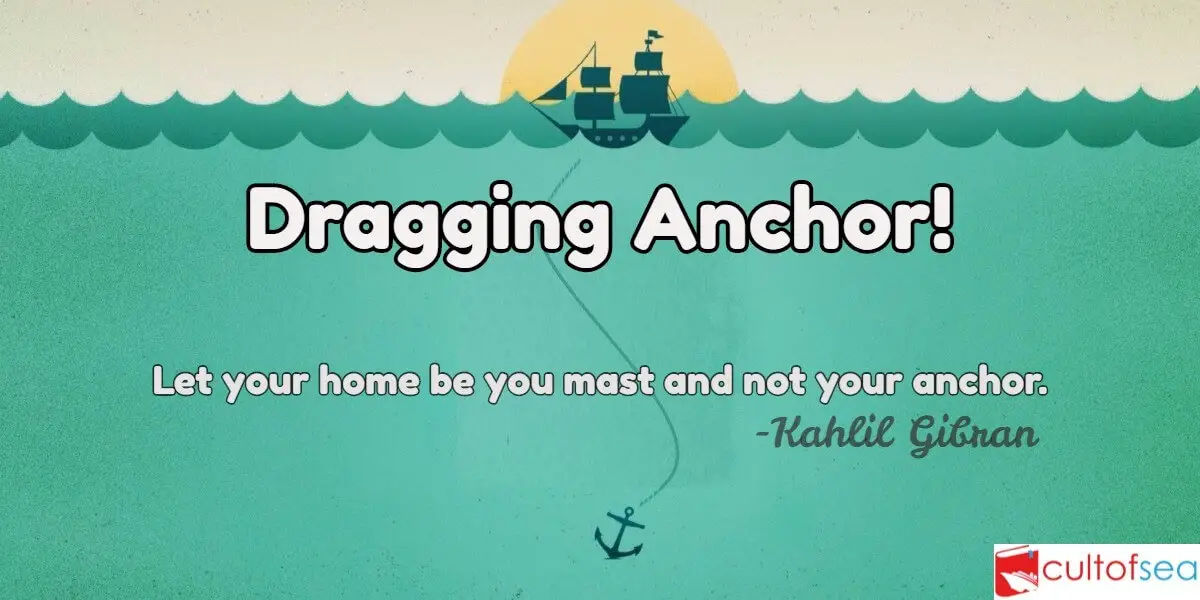It can take some time to realise the Anchor is dragging, despite the ship drifting. A vigilant bridge watch is, therefore, essential.
- By watching the bearing of two fixed lights or objects in line. Beam bearings are the best. If they change, the ship is dragging.
- By dropping the deep sea lead on to the bottom, and noting if it trails ahead of the ship.
- By observing the anchor cable if she comes to long stay then short stay and then long stay repeatedly means she is dragging anchor.
- The ship’s side against the wind hasn’t changed.

- Checking to see there is no slacking of chains just before a ship’s side against the wind turns
- By plotting the position of the vessel and confirming that the position is within the swinging circle. (The most currently reliable way of checking whether the anchor is dragging is to carefully monitor the vessel’s position by visual and electronic means to confirm whether it remains within a swinging circle defined by the scope of anchor cable and the distance from the forecastle to the bridge. If it deviates from the circle, the ship is likely to be dragging its anchor. Reliance should not be placed on a single method of fixing the ship’s position. Cross-check whenever possible with an alternative means.)
- Checking whether there are extraordinary vibrations through the anchor chains.
- Checking the course recorder in case it does not indicate a “figure-of-eight” motion locus.
- The bow cannot stand against the wind.
A ship’s anchor drags due to the impact of external forces on it which exceeds the holding power of the anchor and cable.


Leave a Reply